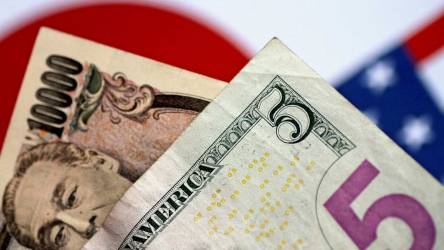Alberto Musalem from the Federal Reserve signaled yesterday that the risk of higher U.S. inflation readings has clearly increased. He was echoed by Austan Goolsbee from the Chicago Fed, who emphasized that higher inflation data from the U.S. would be a “red flag” for the Federal Reserve. Based on these remarks, we can assess that CPI and PCE data — and to a lesser extent, PPI — will be particularly significant for the markets in the near term.
The U.S. dollar is slightly weaker today, especially visible in the EURUSD pair. However, it continues to strengthen against the Japanese yen — USDJPY is up nearly 0.4% today, extending yesterday’s momentum.
Remarks from Alberto G. Musalem, Federal Reserve:
-
I currently believe that inflation will take more time to return to the 2% target
-
A balanced approach to monetary policy remains appropriate, as inflation expectations are slightly higher anchored and inflation itself remains elevated
-
I still view inflation and growth risks as balanced. I expect inflation to return to 2% by 2027
-
I do not see a recession on the horizon. Stagflation is a more extreme scenario than what the U.S. is likely to experience in the coming months
-
Small businesses are indicating they are holding off on hiring and investment
-
I have high expectations for AI-driven technologies to improve productivity over the longer term
-
If inflation expectations start rising, the Federal Reserve may be forced to lean more heavily on its price stability mandate
-
The current environment presents some challenges for monetary policy due to potential tensions between objectives
-
It is likely that, in the near term, inflation will run higher than expected, while growth will fall short of forecasts
-
The impact of Donald Trump’s policies on the economy remains uncertain
-
Economic growth should remain healthy even if it moderates somewhat — I see no urgency to lower interest rates
-
The labor market is at or near full employment
-
Patience in maintaining the current policy stance is appropriate as the Fed gathers evidence that inflation is returning to target
-
If the labor market stays strong and second-round tariff effects become apparent, the Fed may need to hold rates higher for longer or consider more restrictive measures
-
My baseline scenario assumes a strong economy and labor market, along with falling inflation
-
Growth has indeed slowed, and surveys indicate a cautious stance from both businesses and consumers
-
The risk that inflation stalls above 2% — or rises further in the near term — has clearly increased
USDJPY continues to hold its upward momentum and is approaching the 151 level, although the USD Index (USDIDX) is down nearly 0.1% today.

Source: xStation5
BREAKING: US jobless claims below expectations!🚨
Chart of the day: USDJPY (24.12.2025)
Morning Wrap (24.12.2025)
Daily Summary: Holiday Commodity Fever


